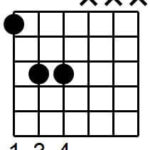The world of slide guitar offers diverse approaches, and for many years, I immersed myself in bottleneck guitar playing. It was my primary focus until I discovered the unique voice of the lap steel guitar. While both involve sliding techniques, the nuances and approaches are distinct.
From Bottleneck Beginnings to Lap Steel Discovery
My initial bottleneck setup involved heavy gauge strings and relatively low action, which is somewhat unconventional for bottleneck. This allowed me to maintain chord voicings and utilize my fretting fingers in conjunction with the slide. However, bottleneck for me was primarily about single-note melodies and double-stop phrases.
Transitioning to lap steel felt like a natural evolution, yet it opened up a richer harmonic landscape. Lap steel playing, while sharing similarities with bottleneck in terms of single-note lines, truly shines with its harmonic depth. This comes from exploring sophisticated tunings, utilizing slants across the strings, and crafting three-note chord voicings.
Interestingly, I never encountered the ergonomic challenges often associated with bottleneck that some players describe. My slide, crafted from brass pipe, was custom-fitted for my pinky finger, providing excellent control. By wrapping my third finger around the slide, I gained even greater command. Using the pinky finger for the slide also frees up the middle and ring fingers for further manipulation and damping.
Posture and guitar positioning are crucial for comfortable slide playing. Whether standing or sitting with a strap, maintaining a balanced posture eliminates many potential ergonomic issues. I’ve always avoided hunching my shoulders and kept my wrist relatively flat. The concept of using the thumb to rigidly support the guitar neck was never part of my technique; my thumb naturally glides along the neck’s back, offering gentle support and guidance.
The Allure of Lap Steel
Once I embraced the lap steel, my focus shifted almost entirely away from traditional guitar playing. It simply resonated more deeply with my musical sensibilities. There was a period where I was adamant about avoiding effects pedals. However, a gift of a Fessenden Six-Shooter pedal steel changed my perspective. Now, I find myself navigating the complexities of a 12-string universal pedal steel, a challenging yet rewarding pursuit.
This personal journey echoes sentiments shared by others, like Matt Berg, who highlights the ergonomic advantages of lap steel. Matt notes, “The ergonomics of lap steel are so much easier than slide guitar for several reasons: The shorter scale length makes it easier to control the sound, both playing in tune and adding vibrato. The fact that your fingers hold the bar means that a wide variety of bar shapes can all be grasped firmly. Slide guitar depends on you finding a slide that more or less is the right diameter, and even then, no one finger is as strong as holding the bar with several fingers.”
He further emphasizes the natural body position when playing lap steel compared to the contorted wrist position often adopted by slide guitarists. While acknowledging the subjective nature of these observations, Matt concludes, “I would never go back to playing slide guitar. It’s easier to play slide guitar licks on the lap steel than the guitar.”
Conclusion: Finding Your Slide Voice
Ultimately, the choice between bottleneck and lap steel, or even incorporating both, is a matter of personal preference and finding the instrument that best facilitates your musical voice. My path led me from bottleneck to a deep engagement with lap steel, drawn by its harmonic richness and ergonomic comfort. Exploring both worlds can offer valuable insights and expand your slide guitar vocabulary. What are your experiences with Steel Slide Guitar and lap steel? Share your thoughts in the comments below!

